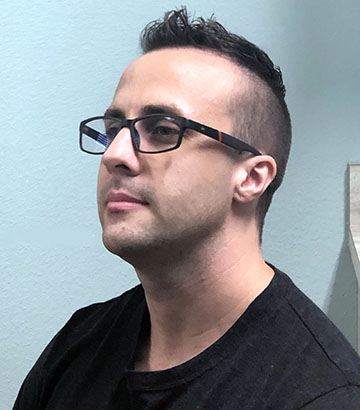Fitness Assessments: Purpose and Function
Clay Hall, CPT and Health Coach

Exercise is an important aspect of lifestyle medicine. If you are beginning the Lifestyle Program, make it your goal to achieve 150 minutes of moderate intensity exercise each week. And if you were to step up your exercise routine to a vigorous intensity, 75 minutes a week is recommended.
The American College of Sports Medicine, in a beautiful display of human potential, was quoted saying, “When it comes to exercise, the benefits far outweigh the risks. A program of regular exercise – beyond activities of daily living – is essential for most adults.” In other words, anyone can do this.
Exercise is a natural way to live a full, healthy life. Not only does exercise prevent and protect individuals from chronic illnesses brought on by poor lifestyle habits, but the CDC also cites its abilities to control weight, strengthen muscles and bones, to promote mental health, boost mood, and to increase the chance of living longer. Not only can you live longer, you can live with a quality of life beyond age constraints due to falls associated with poor balance.
The Mayo Clinic even goes as far to praise exercise for improving sleep quality and energy, but also the social aspects of life, including building health-conscious families, support networks, and a healthy sex life.
In terms of exercise, muscle is gold, so several fitness assessments are conducted in the Lifestyle Program to get a better picture of a patient’s current physical capacity. Fitness is not one-size-fits-all, therefore fitness assessments draw attention and focus to specific areas to build a better Exercise Prescription. They are as follows:
- Flexibility/Mobility
- Faulty movement patterns can cause pain, discomfort, and instability, as well as weakening of muscle groups.
- Modified Body-weight Squat test, which determines if a patient can load their own body weight efficiently onto their legs. It also determines where the patient generates their workload.
- Front Plank test, which demonstrates a patient’s core musculature ability to hold the spine in a safe, neutral position.
- Overhead Reach test, which analyses a patient’s range of motion as adequate or inadequate due to the common sedentary jobs that often put a patient’s shoulders into habitual internal rotation.
- Faulty movement patterns can cause pain, discomfort, and instability, as well as weakening of muscle groups.
- Balance
- Balance becomes increasingly important as patients age. To live a full, independent life, patients must be active to regain lost muscle and adequate postural control.
- Stork-stand Balance test, which assesses static balance.
- Sharpened Romberg test, which demonstrates a patient’s static balance with a reduced BOS and the removal of visual sensory perception.
- Balance becomes increasingly important as patients age. To live a full, independent life, patients must be active to regain lost muscle and adequate postural control.
- Strength
- Strength Assessments #1
- Push Ups test, which evaluates a patient’s full-body musculature endurance according to gender and age.
- Sit Ups test, which evaluates a patient’s abdominal and hip flexor endurance based on gender and age.
- Strength Assessments #2
- Hand Grip Strength test, which demonstrates grip strength indicative of overall body strength as a person age. Results are compared to gender and age standards.
- Isometric Leg Lift test, which evaluates a patient’s quadriceps strength according to gender standards.
- Strength Assessments #1
Patients selected for testing are often those who have taken up a regular exercise program and have consented. Patients are not asked to test on their first Lifestyle visit, as obesity and overweight is often associated with low self-esteem and lack of confidence. Obese and overweight individuals often struggle with basic activities of daily living (ADL), especially getting up and down from the floor. Fitness assessments are about empowerment, not embarrassment. In these instances, it is imperative to get them moving and to increase their self-efficacy before pointing out inadequacies.
Patients completing fitness assessments are tested once a month in a rotation of the assessments listed above. When a patient completes a fitness assessment, their results are recorded and shared. Recommendations for improvement are also discussed. Patients are written an Exercise Prescription and are given the original results to take home for reference to foster self-competition. A copy is scanned into their charts. Another copy is presented to Dr. Evans for review. Patients are re-assessed every 3 to 4 months for improvement.
In conclusion, patients adopting a healthy lifestyle should not only take charge of their diet, sleep, and stress levels, but they should also be safely active. Fitness assessments help identify and remedy weak areas including excess weight, instability, over- and under-worked muscle groups, and joint discomfort. Exercise Prescriptions remind patients that exercise is medicine, one that they can take control of. Strong is beautiful.
For additional information on the benefits of physical activity:
American College of Sports Medicine http://www.acsm.org/about-acsm/media-room/news-releases/2011/08/01/acsm-issues-new-recommendations-on-quantity-and-quality-of-exercise
Centers for Disease Control and Prevention
https://www.cdc.gov/physicalactivity/basics/pa-health/
The Mayo Clinic
http://www.mayoclinic.org/healthy-lifestyle/fitness/in-depth/exercise/art-20048389?pg=2






